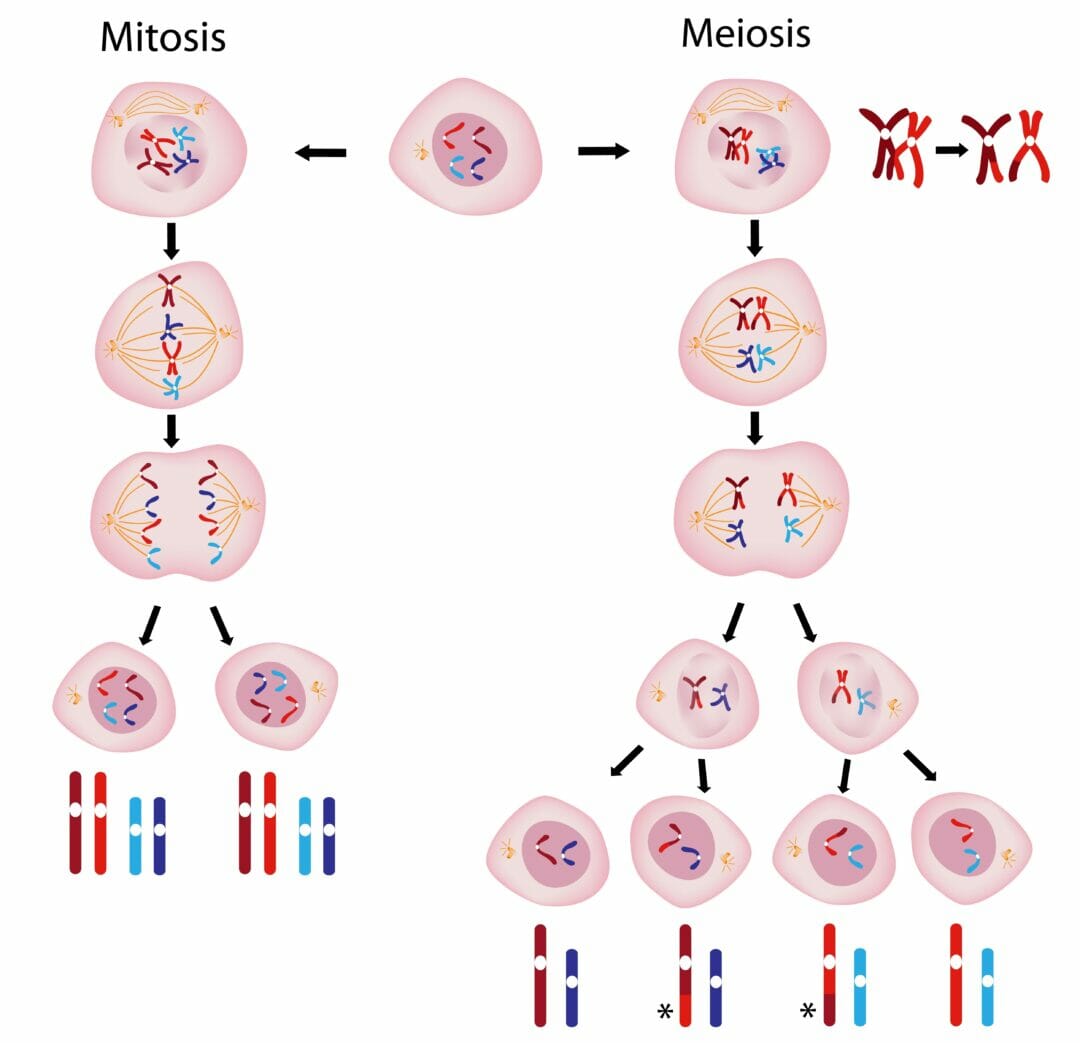
Cell Division Cheat Sheet
Cells divide to allow growth or to replace damaged cells.
Somatic cells are all the cells found in a body EXCEPT reproduction cells.
Reproduction cells are called germ cells.
Germ cells are found in the ovaries (ova) and the testes (spermatozoa)
Somatic Cell Division
Somatic cells divide by the process of mitosis.
Mitosis enables the cells to make exact copies of themselves.
To do this, somatic cells divide into two – this is called binary fission.
In mitosis, the parent cell splits into two daughter cells.
The daughter cells are identical to the parent cell.
They have the diploid number of chromosomes – two sets of chromosomes (one set from each of the parents of the animal or human)
The DNA of the daughter cells is identical.
A cell cannot function as usual during mitosis
Inside the cell, DNA coils around proteins to form chromosomes.
The DNA cannot tell the cell what to do while it is coiled.
The stages of mitosis
- Prophase
- Two centrosomes (pairs of centrioles) start to position themselves at opposite ends of the cell.
- Chromatin condenses to form chromosomes
- The membrane around the nucleus starts to dissolve
- Metaphase
- The chromosomes position themselves between the centrosomes and the centre of the cell.
- Each chromosome is made up of two identical halves called chromatids.
- Anaphase
- The chromosomes split
- The chromatids from each chromosome move in opposite directions towards the centrosomes.
- The number of chromosomes doubles.
- Telophase
- The reverse of prophase takes place.
- There are no two nuclei, and a membrance appears around each one
- The chromosomes uncoil so DNA can function again
- The cell divides into two daughter cells
- Interphase
- Not always classed as a ‘proper’ phase of mitosis.
- A resting phase where the daughter cells grow, carry out the functions they were designed to do, before they start the process of mitosis again.
- Before the cell is ready to divide again, it must produce a second centrosome, and each chromosome has to produce a second chromatid.
Germ Cell Division (meiosis)
Germ cell division is called meiosis.
Meiosis only occurs in the gonads.
Sperm and ova are produced.
There are two rounds of cell division which results in 4 daughter cells.
Each daughter cell has half the chromosomes (the haploid number of chromosomes) of the parent cell. This ensures there is the correct number of chromosomes for the species during conception.
